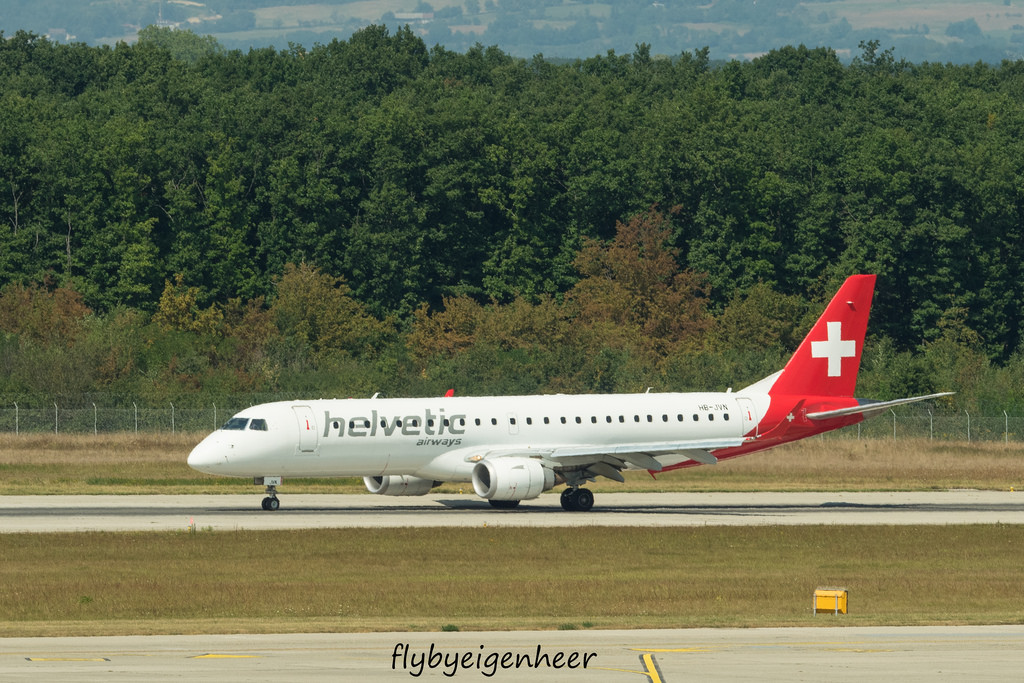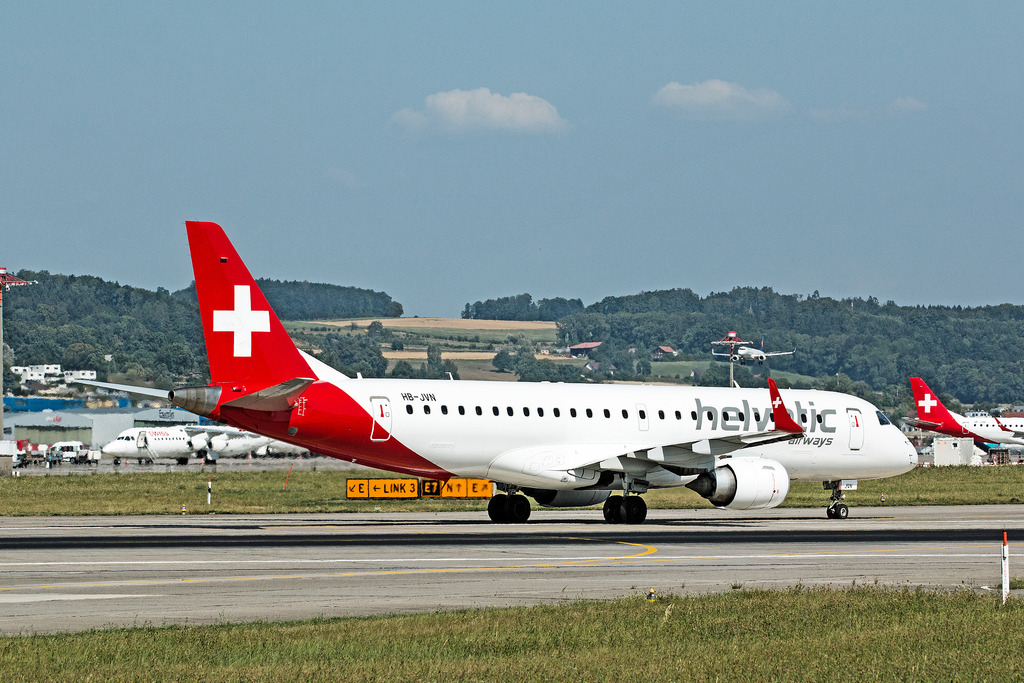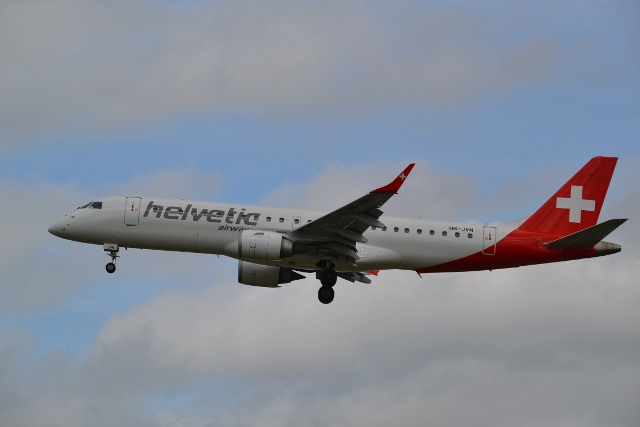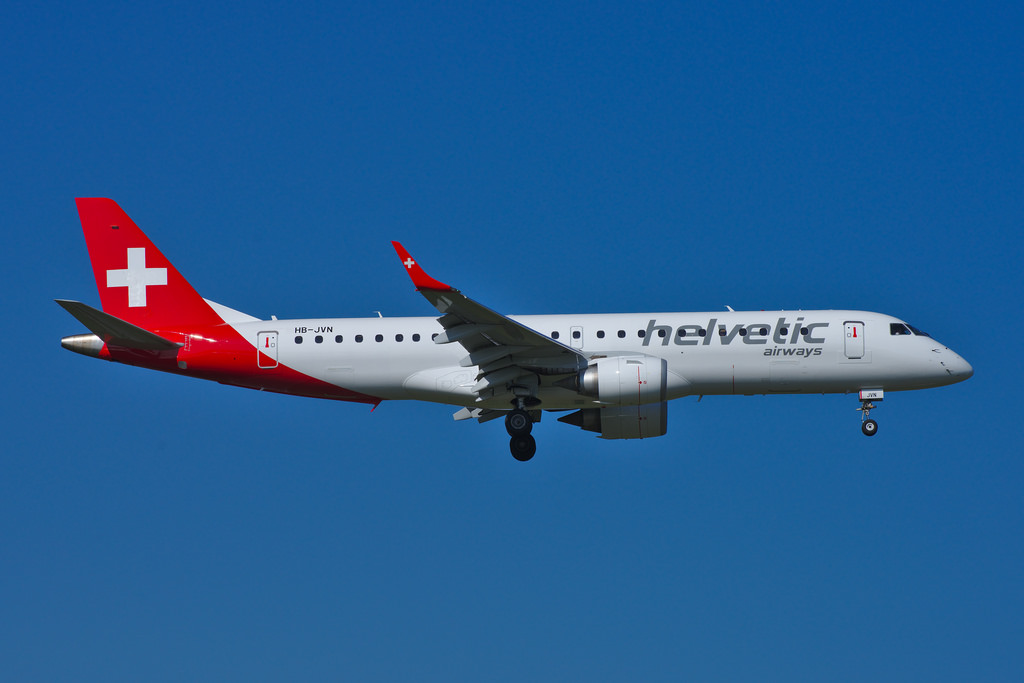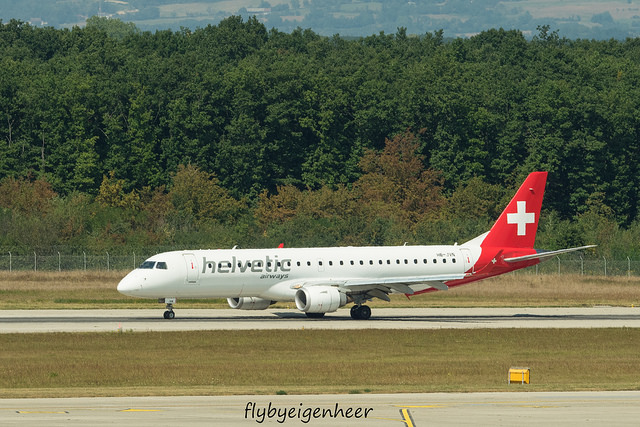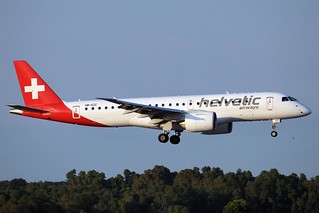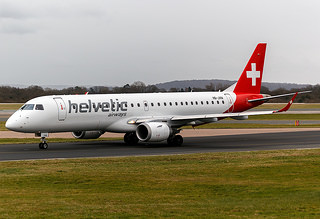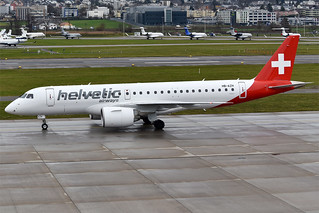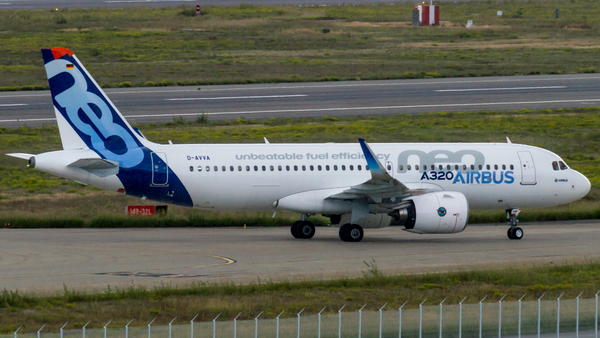Helvetic E190 near Zurich on Jan 12th 2017, loss of cabin pressure and de-icing
Last Update: October 2, 2017 / 21:39:13 GMT/Zulu time
Incident Facts
Date of incident
Jan 12, 2017
Classification
Incident
Cause
Loss of cabin pressure
Airline
Helvetic
Flight number
LX-1585
Departure
Vienna, Austria
Destination
Zurich, Switzerland
Aircraft Registration
HB-JVN
Aircraft Type
Embraer ERJ-190
ICAO Type Designator
E190
Switzerland's SUST rated the occurrence a serious incident and opened an investigation.
On Oct 2nd 2017 the SUST released their final summary report releasing following:
Operational analysis and conclusions
By consulting the MEL and contacting the maintenance company, the flight crew reacted in a manner appropriate to the situation and in the spirit of the aviation operator. However, if a flight is conducted in accordance with the MEL, it is important to be aware of the fact that the lack of redundancy means a single failure can lead to complete failure of key systems (the cabin air conditioning and pressurization system and wing anti-ice system in the present case). The following information in the MEL: “The first dispatch condition on MEL has no icing condition restrictions, since the Cross Bleed Valve operates normally”, may have contributed to the fact that the crew was not sufficiently aware of this.
The fundamental nature of the MEL is that it only mentions the conditions that must be fulfilled in order for a flight to be conducted despite component failures. The decision to conduct a flight in accordance with the MEL, however, is dependent upon other factors, e.g. the weather and other possible technical failures. These can have serious consequences on a flight conducted according to the MEL where the redundancy is already reduced. The decision to execute such a flight is always the responsibility of the commander.
The flight crew reacted to the BLEED 1 LEAK warning message quickly and in a manner appropriate to the situation by immediately requesting a rapid descent and transmitting the urgency message “Pan, Pan”. When the A-I WING FAIL warning message was displayed less than a minute later, the flight crew realized that they also could no longer effect wing anti-icing.
The immediate decision to vacate icing conditions as rapidly as possible and to declare an emergency, was appropriate to the situation and safety-conscious.
The conversations recorded by the cockpit voice recorder indicate that the flight crew monitored the cabin pressure altitude for the duration of the descent and that this information was used in their considerations. It was for this reason that the flight crew initiated a rapid descent rather than an emergency descent. This is evidence that the crew were in control of the situation and acted with foresight. The cabin pressure reached a maximum pressure altitude of 5500 ft.
The SUST reported that during start of the right hand engine the crew received a BLEED 2 FAIL message. The crew worked the related checklist but were unable to resolve the problem and shut the engine down. The crew consulted with maintenance and subsequently decided to perform the flight under minimum list requirements with the bleed air #2 system inoperative.
Following a packs off departure, both packs were activated being supplied via the left hand engine's #1 bleed air system. Following cruise at FL300 the aircraft was descending towards Zurich, when the aircraft encountered icing conditions, the ice detectors reported the formation of ice, the anti-ice systems were engaged. This however shut down the #2 pack much to the surprise of the flight crew. The ice detectors ceased detecting ice. About two minutes later while descending through FL200 a BLEED 1 LEAK message activated which automatically shut down the left hand bleed air system causing the air conditioning and pressurization system as well as the wing anti-ice systems to fail.
The commander transmitted PAN and decided to descend more quickly, the ice detectors activated again. ATC cleared the flight to FL130. The commander started the APU, the wing anti-ice system was reported inoperative, the APU start failed. The commander requested an immediate descent to FL100 and was cleared to FL090. The ice detectors ceased detecting ice. The commander decided to declare Mayday, the flight was cleared to descend to FL060. While descending through FL100 the commander noticed the cabin altitude was at 4800 feet. The crew worked the BLEED 1 LEAK checklist, rejected the ATC offer for the shortest route to landing on runway 28 at Zurich as they no longer expected icing conditions, and processed the wing anti-ice checklist. A second attempt to start the APU was successful. The aircraft was subsequently vectored for an ILS approach to runway 14 and landed without further incident.
The SUST reported following landing maintenance performed bleed air leak tests which found no leaks, the warning that occurred during the flight could not be reproduced. The SUST wrote: "In the present case, the bleed air demand was high, as both engine and wing anti-ice systems were activated. The only bleed air source available was the left engine, which was at flight idle. For this reason, the maintenance company initially concluded, together with the manufacturer, that this high bleed air demand had been met by a high proportion of the hot 9th-stage HP bleed air, which led to the triggering of the BLEED 1 LEAK warning in the vicinity of the pre-cooler and pylon."
As there had been no leaks found additional tests were performed which found cracks in the pre-cooler outlet grill causing the duct seal to become loose.
The SUST reported that Embraer released written information "Precooler exhaust duct seal damage in aircraft post-mod precooler grill PN 191-08757-401 leading to real leakage" to operators. A modified pre-cooler grill became available. The SUST wrote: "A post-mod pre-cooler grill, Part Number (PN) 191-08757-401, was installed on aircraft HBJVN. This was replaced as a result of the findings of the check results. Together with the aircraft manufacturer, the maintenance company came to the unambiguous conclusion that the pre-cooler leak discovered had triggered the BLEED 1 LEAK warning."
Aircraft Registration Data
Incident Facts
Date of incident
Jan 12, 2017
Classification
Incident
Cause
Loss of cabin pressure
Airline
Helvetic
Flight number
LX-1585
Departure
Vienna, Austria
Destination
Zurich, Switzerland
Aircraft Registration
HB-JVN
Aircraft Type
Embraer ERJ-190
ICAO Type Designator
E190
This article is published under license from Avherald.com. © of text by Avherald.com.
Article source
You can read 2 more free articles without a subscription.
Subscribe now and continue reading without any limits!
Read unlimited articles and receive our daily update briefing. Gain better insights into what is happening in commercial aviation safety.
Send tip
Support AeroInside by sending a small tip amount.
Related articles
Helvetic E190 near Zurich on Dec 12th 2022, loss of cabin pressure
A Helvetic Embraer ERJ-190 on behalf of Swiss International Airlines, registration HB-JVN performing flight LX-1487 from Prague (Czech Republic) to…
Helvetic E190 at Milan on Aug 24th 2019, smoke in cabin
A Helvetic Embraer ERJ-190 on behalf of Swiss, registration HB-JVN performing flight LX-1629 from Milan Malpensa (Italy) to Zurich (Switzerland), was…
Helvetic E195 at Zurich on May 22nd 2025, flaps problem
A Helvetic Airways Embraer ERJ-195 on behalf of Swiss, registration HB-JVA performing flight LX-1019 from Dusseldorf (Germany) to Zurich…
Helvetic E290 at Zurich on Jan 28th 2024, hydraulic problems
A Helvetic Embraer ERJ-190-E2 on behalf of Swiss International Airlines, registration HB-AZC performing flight LX-1664 from Zurich (Switzerland) to…
Helvetic E190 at Luxembourg on Nov 16th 2023, gear problem
A Helvetic Embraer ERJ-190 on behalf of Swiss, registration HB-JVM performing flight LX-754 from Zurich (Switzerland) to Luxembourg (Luxembourg), was…
Helvetic E290 near Zurich on Apr 14th 2023, hydraulic problem
A Helvetic Airlines Embraer ERJ-190-E2 on behalf of Swiss, registration HB-AZH performing flight LX-1418 from Zurich (Switzerland) to Belgrade…
Newest articles
ASL UK AT72 at East Midlands on Nov 14th 2025, tyre and runway damage on landing
An ASL Airlines UK Avions de Transport Regional ATR-72-212A freighter, registration G-OASB performing flight ABV-108 from Guernsey,CI to East…
TAP A20N at Lisbon on Nov 14th 2025, lightning strike
A TAP Air Portugal Airbus A320-200N, registration CS-TVP performing flight TP-862 from Lisbon (Portugal) to Venice (Italy), was climbing out of…
Subscribe today
Are you researching aviation incidents? Get access to AeroInside Insights, unlimited read access and receive the daily newsletter.
Pick your plan and subscribePartner

ELITE Simulation Solutions is a leading global provider of Flight Simulation Training Devices, IFR training software as well as flight controls and related services. Find out more.
SafetyScan Pro provides streamlined access to thousands of aviation accident reports. Tailored for your safety management efforts. Book your demo today
AeroInside Blog
Popular aircraft
Airbus A320Boeing 737-800
Boeing 737-800 MAX
Popular airlines
American AirlinesUnited
Delta
Air Canada
Lufthansa
British Airways
